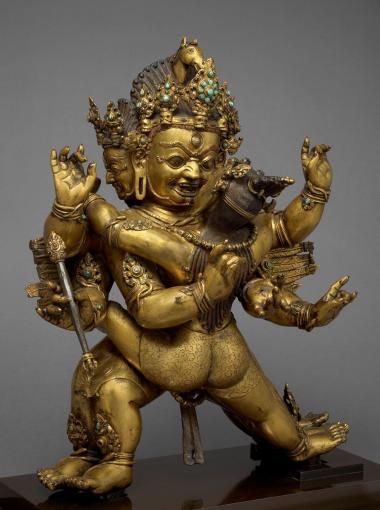Probably arrived in Southeast Asia in the late 1850s during his military service, Gsell, after his discharge, settled in 1865 as a professional photographer in Saigon, capital of French Cochinchina taken from Ðai Nam seven years before (today Hô Chi Minh-Ville, Vietnam). He was not the first to open a photographic studio there, but an obvious talent and privileged connections with Navy officers running the colonial administration ensured him an unchallenged commercial success up to his death in 1879.
At the origin of his success we find photographs taken at Angkor Vat in June 1866, just a few weeks after those of the Scotsman John Thompson, while he accompanied the first stage of the exploration of the Mekong (1866-68). Unlike Thompson, Gsell returned to Angkor several times over the following years, creating a vast portfolio within which this photograph is number 40.
Boosted by the beauty of the site, Gsell achieved here a highly balanced composition, associating the surrounding vegetation with the architecture to offer a harmonious visual synthesis of Angkor Vat. The many constraints of collodion photography in a tropical climate (cumbersome, heavy, and fragile equipment; capricious chemistry, sensitive to temperature and humidity) even increase the merits of this photograph, and the richness of the halftones confirms a complete mastery of the process. The visible degradations of the emulsion reveal the chaotic and unfortunately unknown journey of this plate, discovered in a vacant lot in Marseilles in the late 1970s with 120 other negatives by the same author, purchased by the Society of the Friends of the Musée Guimet in 1997.

